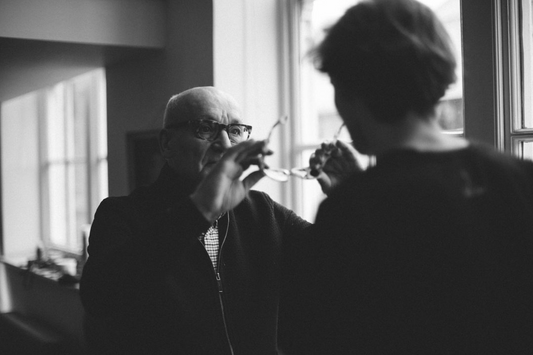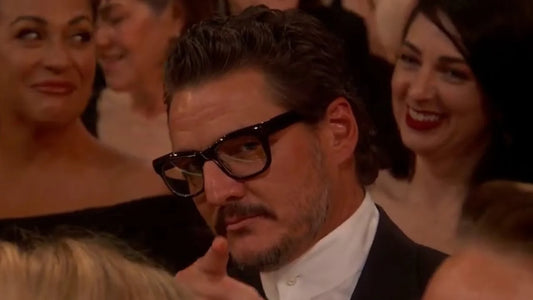 Composer and author, Peter Urpeth
Composer and author, Peter Urpeth
You’re a pianist and composer who for more than thirty years has worked in jazz and free improvisation. What brought you to Jazz?
That is difficult to answer. I cannot really remember a time without it. My eldest brother was a big fan of jazz when I was young and so I heard a lot of great new jazz and improv especially from the UK and Europe from his collection of LPs in the early 70s and some of the early ECM recordings. That included recordings by Keith Jarrett and Kenny Wheeler, which I still listen to.
What music projects are you working on at the moment?
I have been very inspired by the connection and commitment of many musicians to keep making new music at this time and to try new ways of working. Not everything works, of course, but prototyping working methods via remote connections has been productive. I’m using the down time to also work on new scores for some silent movies I’ve never had the time or chance to focus on before. I love playing live in the cinema, hopefully one day soon we can get going again!
How has living in a remote part of Scotland influenced the way you compose, think and create? Do you still have a communion with the city?
In some regards, no, but in others, definitely. I have maintained many music connections in London, and play there regularly. But other projects, many of which I would never have developed in the city, have come into being on the island, simply because you work with the scene and network around you. That means discussion, adaptation, compromise, finding new things that work with the opportunities that are available and at hand. The local art centre, An Lanntair, has also been great, they got me into composing and performing to silent movies for their festival programmes. I find it odd that I had neglected that possible seam of activity until I moved to the Outer Hebrides, even though an aunt and a great aunt of mine were both professional silent cinema pianists back in the day.
Which Black Eyewear frames do you wear? What are your thoughts on the relationship between jazz and style?
I love my Bird frames in a light Havana shade. Jazz and style really do go hand in hand in a timeless and iconic way. You hear a piece of classic jazz – say Miles Davis’ Kind of Blue – and it transports you to a time and a place and a feeling, and good design does that also, and that sense doesn’t diminish with time. I think also that improvisation, which jazz really is at heart, is a process and an approach to composition that originates in the ears, in the process of listening and hearing and responding in the context of the society and culture around you. Good design originates from the eyes, from the decision to see and to look and to responding.

You’ve been working on a moving documentary project about jazz and survival for the past few years – Manna. What is the significance of Manna House for a community like Harlem?
The Manna House Workshops came into being in East Harlem in the mid-1960s. The community in that area of New York City was among the most deprived and forgotten in the USA at that time. Racism, endemic societal, institutional and individual, worked, to deprive local communities of the resources they needed, including education. Manna House Workshops, in that one locality, stepped into that role, providing music and dance tuition to the local community at an affordable rate, and it became an oasis for that community. It opened the very afternoon that Martin Luther King was killed. But also, its founder, Gloria Denard, placed jazz at the centre of the community’s creativity and worked with a spirit of openness and generosity, a spirit of love and a will for productive survival in the face of overwhelming adversity that I think is at the core of jazz music’s history and its message. Gloria Denard sadly passed earlier this year, but the need for resources such as MHW in communities does not diminish. In the film, the great trombonist and composer, Craig Harris, who played in the Sun Ra Arkestra, says that to educate people is the single most powerful political thing you can do. I agree, and that need has not changed. It is a film about the power of self-determination for communities, and is an object lesson in tenacity and commitment in the face of that constant oppression.

How did you discover and build a relationship with Gloria DeNard and Manna?
From my late teenage years, I’ve also worked as a journalist writing about this music, and I’ve always had a strong sense of a unique story. I met Gloria Denard about 6 or 7 years ago. I was working In New York and took a Sunday afternoon trip to Manna House to see a gig featuring the late, great bassist Henry Grimes and the amazing pianist and multi-instrumentalist, Cooper-Moore. Gloria greeted me at the door and I knew straight away that MHWs was not your average music school, or your average venue, but a unique survivor and a place of community and love quite unlike anything I’d encountered elsewhere. Gloria radiated those qualities in abundance, and she was also so determined to keep going, she never in 52 years of running MHW lost track of her mission. That Sunday afternoon, I knew I would be going back to MHW with a camera, two years later I did, and it was a humbling experience. What I had sensed at the start was just a tiny portion of the actuality and reality. Gloria was generous to a tee, protective of her mission but also so open. She was 92 when we made the film.
The archival photographs in the film speak of both the centre and the local community’s rich history, how did the collection of images come together?
The photos were in the the archive of the school itself, folders of only lightly sorted pictures, programmes and cuttings dating back 50 years. It was not only music and dance that Gloria and her team encouraged, many really important photographers got some of their early work at Manna House through Gloria’s encouragement, including the great Larry Brown.
How have the musicians who have come out of the programme flourished beyond?
Some have gone on to professional music and dance careers, for many more the school supported them to become adults and to survive in very difficult circumstances. One to mention, is the Kenwood Dennard, drummer and educator and Gloria’s son. Kenwood took up the drums in the Manna House’s basement and he is now a professor of music and one of the finest drummers out there – he has worked with the likes of Miles and Gil Evans, with Jaco Pastorius and so many more. Kenwood is the inheritor of Gloria’s vision and heart, his music now is a testament to both.
And to wrap up, some quick fire thoughts:
Best book you’ve read in recent times?
My fav book at present is Dan Fox’s Limbo (Fitzcarraldo Editions) which is a meditation on the value of fallow periods in creative work, Very timely even though I think it first came out in 2018. Also Terri White’s memoir Coming Undone (Canongate) and the early novels of Toni Morrison.
Any rituals/habits you can share that’s kept you inspired and motivated during this incredibly strange time?
I think making new music and keeping connected with your creative community are vital. Not easy given the restraints and frustrations. Also, I’ve taken to listening to live streams every night, mostly from Small Jazz Club which streams on Facebook and is surprisingly high quality, great sound, and amazing acts. That helps me to keep some hope that some of the clubs will make it through.
Favourite documentary?
Marlon Riggs’ ‘Tongues Untied’. I’d also add ‘Toni Morrison: The Pieces I am’, which was the last film I saw in a cinema before the lockdown and so besides being a great film has taken on something of a legendary status for me.
What are your top 3 places to experience Jazz music in the world?
Smalls Jazz Club in New York, Cafe Oto in Dalston, London, and of course The Village Vanguard in NYC.
Favourite Jazz record, and why?
Hardest of all the questions to answer! So many are constant companions. If I had to grab from a burning Juke Box it would be Night Fire by the John Carter Quintet, with JC on clarinet and the amazing Bobby Bradford on trumpet, but I’d go back in if I could to get Etudes by Geri Allen, Charlie Haden and Paul Motion.
Watch his documentary film Manna here.
Discover the work of Peter Urpeth here.





